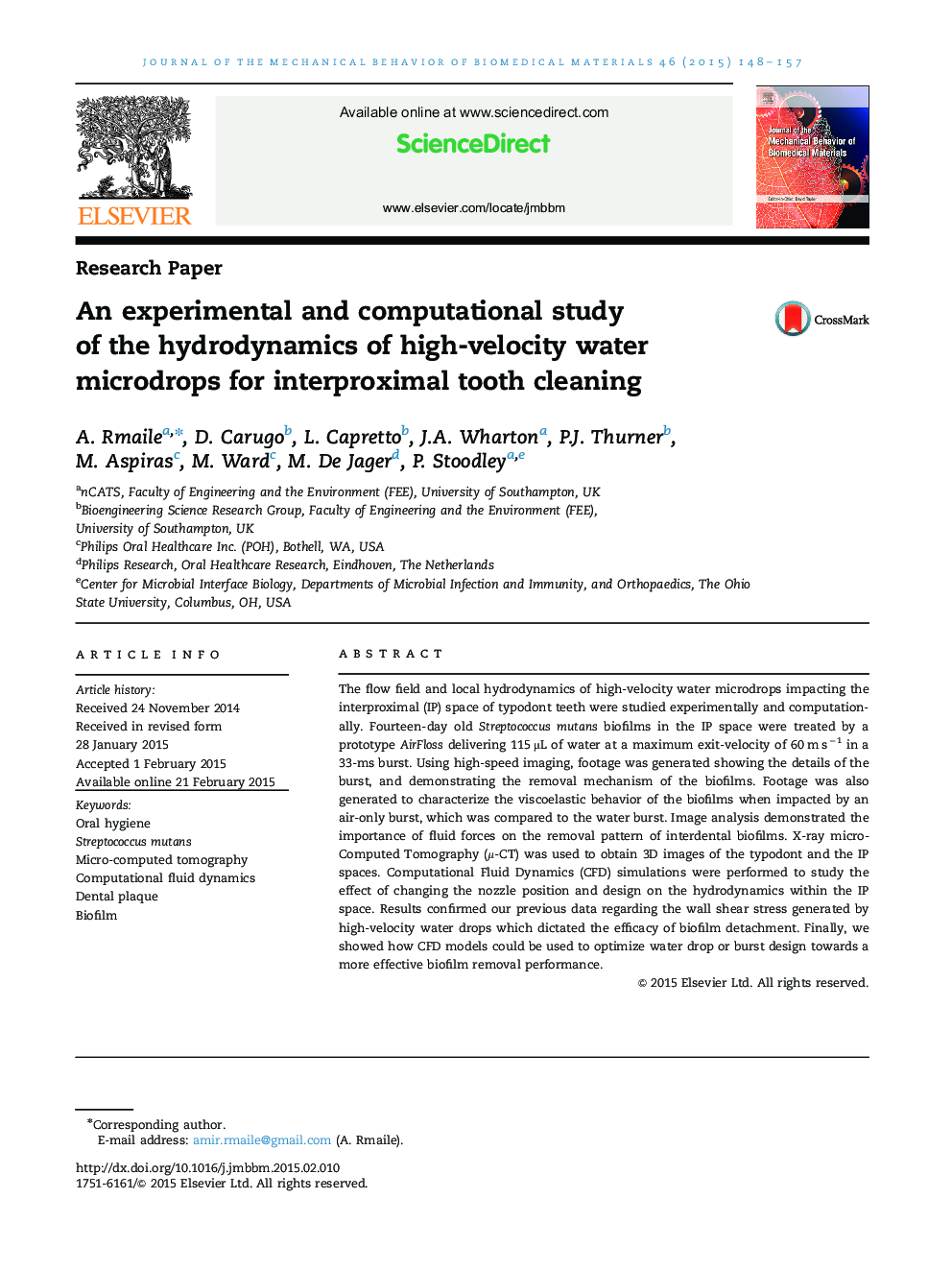| Article ID | Journal | Published Year | Pages | File Type |
|---|---|---|---|---|
| 810626 | Journal of the Mechanical Behavior of Biomedical Materials | 2015 | 10 Pages |
The flow field and local hydrodynamics of high-velocity water microdrops impacting the interproximal (IP) space of typodont teeth were studied experimentally and computationally. Fourteen-day old Streptococcus mutans biofilms in the IP space were treated by a prototype AirFloss delivering 115 µL of water at a maximum exit-velocity of 60 m s−1 in a 33-ms burst. Using high-speed imaging, footage was generated showing the details of the burst, and demonstrating the removal mechanism of the biofilms. Footage was also generated to characterize the viscoelastic behavior of the biofilms when impacted by an air-only burst, which was compared to the water burst. Image analysis demonstrated the importance of fluid forces on the removal pattern of interdental biofilms. X-ray micro-Computed Tomography (µ-CT) was used to obtain 3D images of the typodont and the IP spaces. Computational Fluid Dynamics (CFD) simulations were performed to study the effect of changing the nozzle position and design on the hydrodynamics within the IP space. Results confirmed our previous data regarding the wall shear stress generated by high-velocity water drops which dictated the efficacy of biofilm detachment. Finally, we showed how CFD models could be used to optimize water drop or burst design towards a more effective biofilm removal performance.
